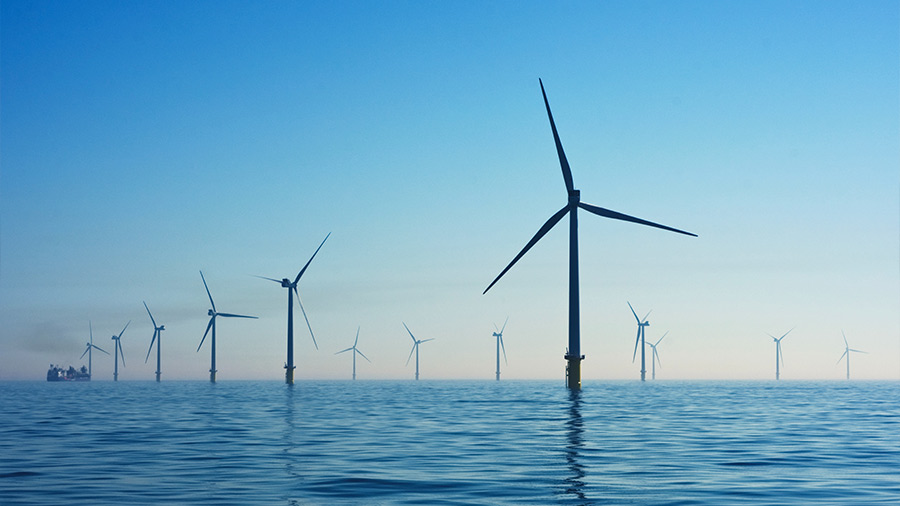Vietnam’s Just Energy Partnership Resource Mobilization Plan (JETP-RMP) has been completed and was presented last Friday at the Conference of Parties 28 in Dubai. Here are the key takeaways from the plan.
In 2022, Vietnam agreed in principle to a Just Energy Transition Partnership with the Glasgow Financial Alliance for Net Zero (GFANZ) also known as the International Partners Group (IPG), a group made up of the G7 and a handful of other developed economies. The deal at the time was to be worth in the vicinity of US$15.5 billion made up of public and private funding.
Fast forward to December 1 this year, and a Resource Mobilization Plan (RMP) for Vietnam, a key tenet of the JETP initiative, was finally announced to the world at the Conference of Parties 28 (COP28) in Dubai. Whereas the agreement forged last year covered the broad strokes, this 200-plus page document goes into far greater detail.
See also (from last year): Explained: Vietnam’s Just Energy Partnership Agreement
Regulatory framework
Firstly, informing the development of the RMP are a number of key pieces of legislation in Vietnam. It’s under these roadmaps that the JETP-RMP has been put together.
The Power Development Plan VIII (PDP8)
Vietnam’s PDP8 is a road map for the development of the energy sector between now and 2030 with an outlook toward 2050. It outlines a power transition that will see coal power reduced to zero by 2050 if several conditions are met. This includes being able to access US$134.7 billion of funds between 2021 and 2030 and a further US$399.2 billion to US$523.1 billion between 2031 and 2050.
See also: Vietnam's Power Development Plan 8: What You Should Know
The National Energy Master Plan (NEMP)
Vietnam’s NEMP addresses Vietnam’s energy sector broadly. Similar to the PDP8, the NEMP outlines the role of renewables in Vietnam’s energy security; however, it also looks at resource extraction: gas, coal, and oil. Gas, in particular, is slated to play a key role in Vietnam’s energy transition.
See also: Vietnam’s National Energy Master Plan: Key Takeaways
JETP financing
The JETP-RMP has been developed under the expectation that public finance commitments will act as a catalyst for private sector investment. It’s with this in mind that the RMP outlines just under US$8 billion worth of investment with the remaining US$7.5 billion expected to come from the private sector.
There are three financial instruments that make up the structure of the financing commitment outlined in the RMP. These are:
- Grants: This can be either technical assistance or capital grants.
- Concessional loans: These are loans offered at a discount to market rates.
- Commercial Development Finance Institution (DFI) loans: This includes loans, guarantees and equity, the terms of which will be developed through risk-based pricing. These are distinguished from regular commercial loans by their consideration of the development objectives of the borrowing entity.
Current commitments
Grants
Per the RMP, US$321.6 million in grants have been offered. Of those funds, US$239.6 million is attached to specific projects, with US$82 million that can be used more flexibly.
Concessional loans
Around US$2.75 billion has been earmarked for concessional loans for Vietnam.
These will be administered by the Asian Development Bank (ADB), the European Investment Bank (EIB), the French Development Bank (AFD), and the German Development Bank (KfW).
These will be issued in coordination with the Government of Vietnam in most instances, with US$2.18 billion worth of finance on offer requiring sovereign guarantees or issued as
sovereign loans.
Commercial DFI loans
The vast bulk of funding pledges, amounting to some US$4.23 billion, will come from commercial DFI loans.
Breakdown of JETP public finance
| Concessional loans | Commercial DFI instruments | |||||||
| Total
(US$ mn) |
Grants/TA | Sovereign | Non-
Sovereign |
Equity | Guarantee | Loan | TBD | |
| Canada | 59 | 4 | 51 | 4 | ||||
| Denmark | 10 | 10 | ||||||
| EU | 920 | 185 | 735 | |||||
| France | 525 | 1 | 524 | |||||
| Germany | 672 | 63 | 399 | 210 | ||||
| Italy | 528 | 264 | 264 | |||||
| Japan | 342 | 2 | 340 | |||||
| Norway | 251 | 1 | 250 | |||||
| UK | 304 | 4 | 50 | 200 | 50 | |||
| US | 1,050 | 50 | 10 | 40 | 950 | |||
| ADB | 2,100 | 1,000 | 1,100 | |||||
| FMO | 315 | 315 | ||||||
| Other | 1,000 | 1,000 | ||||||
| Total | 8,077 | 322 | 2,185 | 528 | 310 | 240 | 4,229 | 264 |
RMP short-term priorities
Projects specifically allocated funding in the RMP are mostly those that will help to administer the JETP program. For example, France has committed US$600,000 for a ‘research program to inform public policies on net-zero strategies and adaptation to climate change,’ whereas the country’s remaining US$523.7 million is designated as ‘project dependent’.
Notably, there are a number of projects that have been identified both by the Government of Vietnam in various master plans as well as by the IPG that are listed in the JETP. The agreement, however, notes that this list is subject to change.
That said, the RMP lists a number of key projects, which will be given priority in the short-term. These are set to be implemented in 2024.
Power transmission grid projects
Power grid development support including:
- Determining the scope, the priorities, and the investment models to be used to mobilize private capital;
- Developing a legal framework to facilitate private sector investment; and
- Assisting in the development of cross-border and offshore transmission projects.
Transmission grid investment including:
- Assisting the state power provider Electricity Vietnam (EVN) in infrastructure development. For example, in the upgrade and expansion of Vietnam’s 500kV and 220kV transmission lines, as well as monitoring control and data management and energy management systems;
- Supporting EVN to invest in 110kV and 22kV distribution solar power, wind power, and rooftop solar power systems can be better integrated into Vietnam’s grid; and
- Supporting the development of offshore wind by developing necessary transmission lines and substations.
Battery and pumped storage
Energy storage system support including:
- Capacity building for staff and technicians;
- Policy framework development support; and
- Needs assessments/feasibility studies.
Energy storage investment including:
- A pilot project of Battery Energy Storage System (BESS) of 50MW/50MWh with EVN to explore ancillary services and determine pricing mechanism as well as technical standards;
- A BESS pilot project of 7MW/7MWh integrated with a 50MW solar farm along with a 105MW/105MWh BESS project integrated with a 400 MW solar farm; and
- Finishing the Bac Ai pumped storage hydropower plant.
Projects on offshore wind power development
Offshore wind power development support including:
- Capacity building for government ministries in the development of marine spatial planning policies with respect to offshore wind;
- Partial financing for a first offshore wind power project of 2 GW installed capacity;
- Funding support for environmental and wind speed data collection; and
- Surveying support for planning offshore wind power projects.
Offshore wind power investment, including
- Investment support to reach a capacity of 6 GW of offshore wind power by 2030.
RMP mid-term priorities
Looking beyond 2024, the RMP outlines a number of priority areas and corresponding targets.
Energy efficiency (EE)
In order to reduce the power demand by 10 percent by 2030 over current demand forecasts, the RMP will prioritize:
- Enhancing energy efficiency in public facilities;
- Phasing out indirect subsidies applied to electricity prices;
- Supporting the enforcement of existing EE regulations; and
- Assisting in the expansion of EE regulations.
As a part of its EE priorities, the RMP also outlines a Smart and Energy Efficiency City Project (SEECP), which will see the retrofit, upgrade, and expansion of street lighting in Vietnam. The cost and kWh savings are not detailed in the plan.
Solar power
In order add 25-30 GW of solar PV to Vietnam’s power supply by 2030 the RMP prioritizes:
- Finalizing the rules for Direct Power Purchase Agreements;
- The introduction of tenders for solar power plants combined with battery storage;
- The introduction of surplus tariffs for rooftop solar and multiple land-use solar systems; and
- The development of a strategy for developing solar power on public buildings.
Phasing out coal
In order to facilitate the transition away from coal, the RMP prioritizes:
- Restructuring PPAs to incentivize flexibility;
- Restructuring debt using blended finance to reduce the cost of the energy transition on coal power providers and mitigate the impacts of forgone revenue; and
- Supporting the development of a carbon market.
Specifically, the RMP lists three key coal transition projects it will try to transition first. These are:
- Cao Ngan coal-thermal power plant;
- Pha Lai 1 coal-thermal power plant; and
- Ninh Binh coal-thermal power plant.
Vietnam’s JETP moving forward
Vietnam’s JETP has been lauded as pivotal to the country’s transition to a greener economy and a reduction of its greenhouse gas emissions. Its success, however, will be contingent on the effective implementation of the project and the efficient use of funds provided by the IPGs.
With the RMP now in place, the path forward has become clearer. For firms in the renewables energy sector, the time to seriously consider entering the Vietnam market has come. That said, it is not always easy, and firms would be well advised to source boots-on-the-ground support from the business advisory experts at Dezan Shira and Associates.







